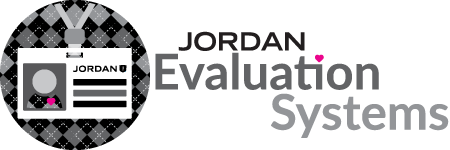Planning
Preparing Instruction
Indicator 56 – Learning Differences
UETS 2 – The teacher understands individual learner differences and cultural and linguistic diversity.
Effective teachers adapt and develop materials that are appropriately matched for all learners. They know that a differentiated curriculum engages more students in meaningful activities, provides more chances for individualized work and presents a wide variety of learning opportunities. Since we know not all students are alike, differentiated instruction applies an approach to teaching and learning that gives students multiple options for taking in information and making sense of ideas. Effective cross-cultural relationships aren’t dependent on the teacher knowing everything about the cultural practices of all their students. However, culturally competent teachers acknowledge their ongoing need to learn, and keep open lines of communication with students and families.
IDEAS/SUGGESTIONS:
- Be prepared to show evidence of how you have varied requirements to accommodate the special needs of students who are accelerated or remedial. To show varied requirements means the same assignment, same work, but there are adjusted amounts assigned. Examples may be one of the following:
- A student contract which adjusts student assignment requirements
- Same assignment for all students, but a student is only required to complete part of it
- A grading sheet which adjusts the amount of work necessary to complete an assignment, providing accelerated students, for example, with an opportunity to explore higher-order questions
- A 504 plan designed by home and school to meet special needs
- Evidence that you worked with special education to create and follow an IEP (Individual Education Plan)
- Be prepared to show evidence of how you have modified activities to accommodate the special needs of students who are accelerated or remedial. Modified activities means a change of assignment, different from what is assigned for all. Examples may include one of the following:
- Allow outlining, instead of writing for an essay
- Use of alternative books or materials for a topic being studied
- Word bank of choices for answers to test questions
- Provision of calculator or number line for math test
- Reworded questions in simpler language
- Projects instead of written reports
- Highlighting important words or phrases in reading assignments
- Be prepared to show examples of how you use the cultural knowledge, prior experiences, and performance styles of diverse students to make learning more appropriate and effective for them. It teaches to, and through, the strengths of students. Be prepared to show examples such as:
- Utilizing a wide variety or instructional strategies that are connected to different learning styles
- Teaching students to know and praise their own and each other’s cultural heritages
- Incorporating multi-cultural information, resources, and materials in the subjects and skills routinely taught in schools
- Translating materials into languages spoken in students’ homes
- Be prepared to show evidence of contributing to a school-wide culture that is sensitive to learner differences and cultural diversity. Examples may include the following:
- Sharing resources with other staff members to address cultural differences throughout the school
- Sharing strategies with other staff members for English Language Learners (ELL)
- Providing parent workshops that teach academic support skills such as how to talk to teachers about ways parents can help their children develop academic skills
- Offering multiple opportunities for parents to be involved in meaningful school and classroom activities that can fit diverse schedules, skills, and abilities
- Providing a professional development for faculty after attending a conference on literacy for ELL
- Being on a committee that develops school norms, values and rules designed to promote more positive social relationships between students
NOTE: If you have difficulty adapting and modifying your curriculum, consider the following:
- What are your requirements to succeed in class; how might this requirement be difficult for certain students?
- What demands do you place on students?
- How do you expect students to perform?
- How do you present material to students?
- Do you allow students guided practice?
- Do you expect students to demonstrate their knowledge?
- Determine how a specific student is not meeting your expectations.
- Tentatively analyze what might be causing the failure and determine what specific academic and non-academic skills the student needs.
- Can you modify your classroom to help the student succeed?
- Formulate a plan of action that makes simple changes, one at a time, and at the same time continues to provide support for the student
- Implement that plan
- Evaluate the plan and make necessary changes
